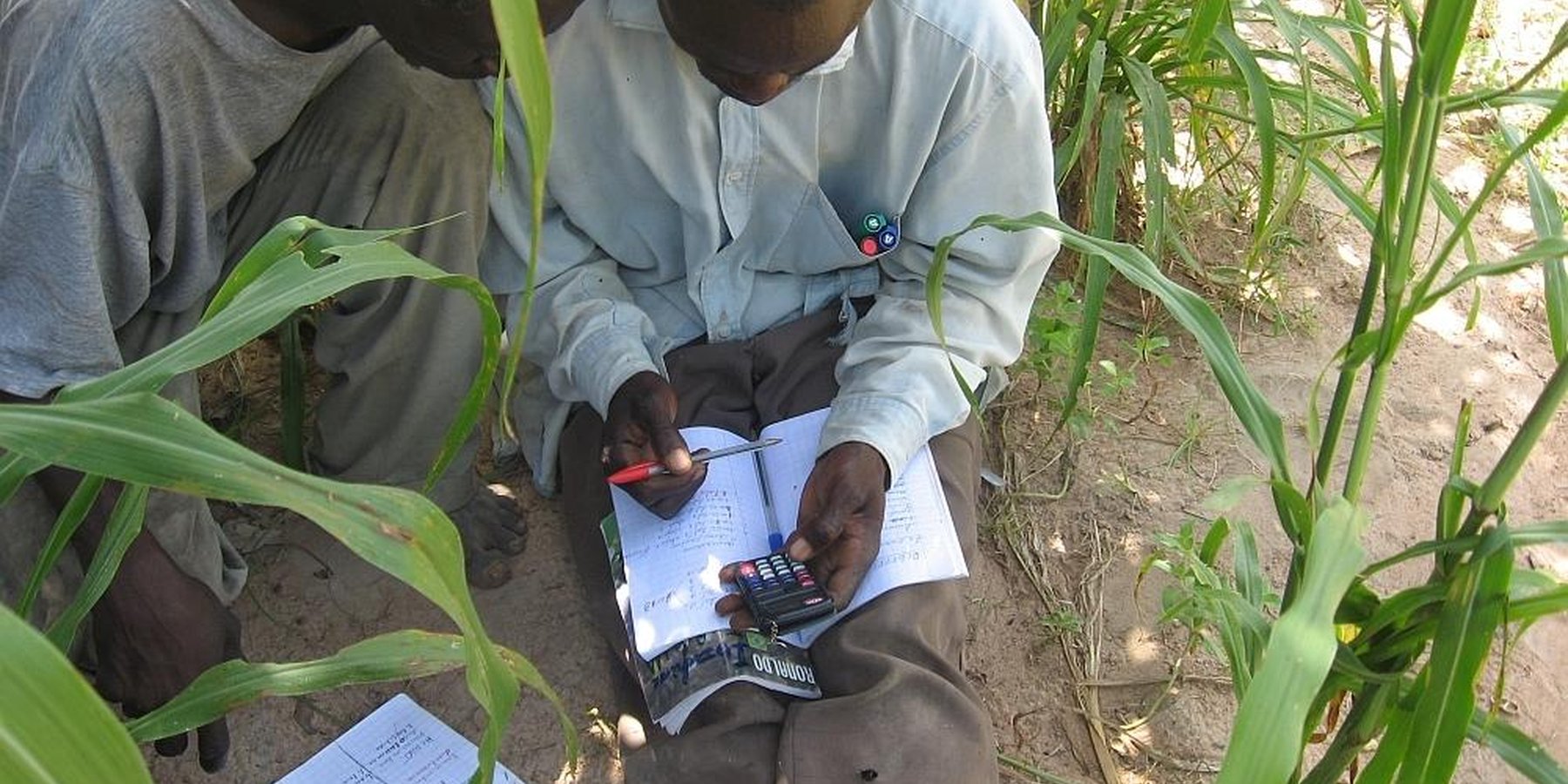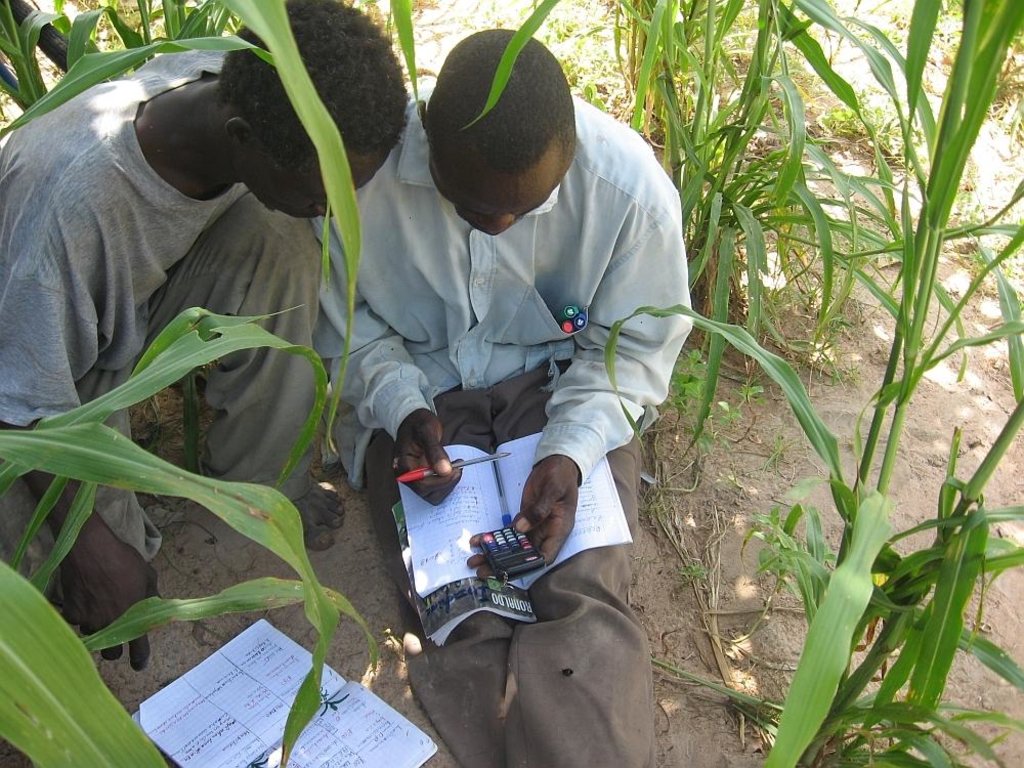Locally sourced farming trainers: the farmer resource persons system [Мали]
- Создание:
- Обновить:
- Составитель: Dieter Nill
- Редактор: –
- Рецензент: Laura Ebneter
Approche paysanne formateur endogène: dispositif de personnes ressources paysannes
approaches_2507 - Мали
Просмотреть разделы
Развернуть все Свернуть все1. Общая информация
1.2 Контактные данные специалистов и организаций, участвующих в описании и оценке Подхода
Специалист по УЗП:
Guindo Idrissa
idrissa.guindo@helvetas.org
HELVETAS - Swiss Intercooperation
Мали
Специалист по УЗП:
Keita Lassana
HELVETAS - Swiss Intercooperation
Мали
Специалист по УЗП:
Dacko Maïga Rosaline
rosaline.dacko@helvetas.org
HELVETAS - Swiss Intercooperation
Мали
Название организации (-ий), содействовавших документированию/оценке Подхода (если применимо)
Deutsche Gesellschaft für Internationale Zusammenarbeit (GIZ) - ГерманияНазвание организации (-ий), содействовавших документированию/оценке Подхода (если применимо)
HELVETAS (Swiss Intercooperation)1.3 Условия, регламентирующие использование собранных ВОКАТ данных
Когда были собраны данные (на местах)?
01/09/2012
Составитель и ответственный/-ые специалист(-ы) согласны с условиями, регламентирующими использование собранных ВОКАТ данных:
Да
2. Описание Подхода УЗП
2.1 Краткое описание Подхода
A network of farmer resource persons (FRPs) is built up to provide advice and training according to the on-the-ground needs of farmers
2.2 Подробное описание Подхода
Подробное описание Подхода:
This approach aims to promote a sustainable and inexpensive advisory support model for farming by training up a pool of expert farmers to spearhead the dissemination of agricultural innovations. This involves establishing local resources in places where public technical services are lacking or non-existent.
Farmer Apex Organisation (FaAO) identify local experts who possess relevant know-how and then develop their capacities for teaching and facilitation. A network of farmer resource persons (FRPs) is then gradually built up to provide advice and training according to the on-the-ground needs of farmers working in different areas such as farm management, rice growing, nurseries and transplanting, compost making, contour farming, combatting erosion, shea management, creating a ridge-furrow system, seed production, conserving produce, market gardening techniques, water management, fish farming, etc.
The apex organisations nominate their resource persons. With the support of technical partners, they then categorise FRPs according to their qualifications, expertise and communication skills. The support structure strengthens the capacities of FRPs according to their needs. These resource persons set themselves up as experts, offering their services to other farmers. PRPs benefit from group capacity building exercises in advocacy and facilitation, and their technical capacities are built according to individual needs and the requirements of the market. Once trained, FRPs can organise themselves (into economic interest groups, cooperatives, etc.) and then provide services as requested by farms, local authorities, apex organisations and support partners. Service provision is remunerated in several ways and in accordance with the means of the client: in kind, lump sum, fee-based payment, compensation, etc.
Role of stakeholders: The apex organisation identifies, categorises and mobilises the FRPs and participates in monitoring and evaluating the implementation of the system. The support structure supports the process of identifying and categorising the FRPs for training. It organises thematic training and monitors and evaluates implementation. The territorial community promotes the scheme and mobilises FRPs. Technical services build the capacities of FRPs through the provision of training and advisory support.
Other important information: FRPs provide services to their FaAO members and others. In 2011, two groups of experts (UFROAT and Cèsiri) earned more than 7,000,000 CFA francs in service provision (training) takings. FRPs are employed by other organisations, such as the Rural Community Support Project (PACR), World Vision, LuxDev and the Agricultural Sectors Support Programme (PAFA).
2.3 Фотографии, иллюстрирующие Подход
2.5 Страна/ регион/ место, где применялся Подход
Страна:
Мали
Административная единица (Район/Область):
Mali
Более точная привязка места:
Sikasso (Koutiala, Yorosso), Ségou (Bla, San, Tominian)
2.6 Даты начала и окончания реализации Подхода
Год начала реализации:
2007
2.7 Тип Подхода
- в рамках проекта/ программы
2.8 Каковы цели/ задачи Подхода
The system aims to install a local support system, building on existing competencies.
The SLM Approach addressed the following problems: low dissemination of already existing knowledge and expertise related to on-the-ground needs of farmers
2.9 Условия содействующие применению Технологии/ Технологий в рамках Подхода или затрудняющие его
другие
- затрудняют
low dissemination of already existing knowledge and expertise related to on-the-ground needs of farmers
Treatment through the SLM Approach: Farmer Apex Organisation (FaAO) identify local experts who possess relevant know-how and then develop their capacities for teaching and facilitation. A network of farmer resource persons (FRPs) is then gradually built up to provide advice and training according to the on-the-ground needs of farmers working in different areas
3. Участие и распределение ролей заинтересованных сторон
3.1 Заинтересованные стороны, участвующие в реализации Подхода и их роли
- местные землепользователи/ местные сообщества
- эксперты по УЗП/ сельскому хозяйству
- общественные организации
- местные власти
3.2 Участие местных землепользователей/ местных сообществ на разных стадиях реализации Подхода
| Участие местных землепользователей/ местных сообществ | Перечислите участников и опишите их вовлеченность | |
|---|---|---|
| инициирование/ мотивация | пассивное | |
| планирование | пассивное | |
| выполнение | интерактивное | |
| мониторинг/ оценка | интерактивное | |
| Research | пассивное |
3.4 Принятие решений по выбору Технологии/ Технологий УЗП
Укажите, кто принимал решение по выбору применяемой Технологии/ Технологий:
- в основном землепользователи при поддержке специалистов по УЗП
Поясните:
Decisions on the method of implementing the SLM Technology were made by mainly by land users supported by SLM specialists
4. Техническая поддержка, повышение компетенций и управление знаниями
4.1 Повышение компетенций/ обучение
Проводилось ли обучение землепользователей/ других заинтересованных лиц?
Да
Укажите, кто проходил обучение:
- землепользователи
- местный персонал/консультанты
Тип обучения:
- обмен опытом между фермерами
- общие собрания
Рассматриваемые темы:
Individuals selected as potential FRPs already have a wealth of talent and know-how. This practice aims to further add to this knowledge and expertise and ensure it is disseminated effectively. The system aims to install a local support system, building on existing competencies.
4.2 Консультационные услуги
Есть ли у землепользователей возможность получать консультации?
Да
Укажите, где именно оказываются консультационные услуги:
- на полях землепользователей
Описание/ комментарий:
Name of method used for advisory service: Training of local experts for teaching ; Key elements: A network of farmer resource persons (FRPs) is gradually built up to provide advice and training ; Farmer Apex Organisation (FaAO) identify local experts who possess relevant know-how and then develop their capacities for teaching and facilitation. A network of farmer resource persons (FRPs) is then gradually built up to provide advice and training according to the on-the-ground needs of farmers working in different areas. The system aims to install a local support system, building on existing competencies.
Advisory service is quite adequate to ensure the continuation of land conservation activities
4.3 Институциональная (организационная) поддержка
В ходе реализации Подхода были ли организованы новые институциональные структуры или поддержаны уже существующие?
- да, существенно
Укажите уровень, на котором структуры были укреплены или вновь созданы:
- местные
Укажите тип поддержки:
- финансовая
- повышение компетенций/ обучение
4.4 Мониторинг и оценка
Являются ли мониторинг и оценка частью Подхода?
Да
Комментарии:
technical aspects were ad hoc monitored by project staff, land users through observations
socio-cultural aspects were ad hoc monitored by project staff, land users through observations
economic / production aspects were ad hoc monitored by project staff, land users through measurements
management of Approach aspects were ad hoc monitored by project staff, land users through observations
There were no changes in the Approach as a result of monitoring and evaluation
There were no changes in the Technology as a result of monitoring and evaluation
4.5 Научные исследования
Были ли научные исследования частью Подхода?
Да
Укажите темы исследований:
- социология
- экономика / маркетинг
- экология
- технология
5. Финансирование и внешняя материальная поддержка
5.1 Годовой бюджет мероприятий по УЗП в рамках Подхода
Комментарий (например, основные источники финансирования/ ключевые доноры):
Approach costs were met by the following donors: international non-government: 100.0%
5.2 Финансирование и внешняя материальная поддержка, предоставляемая землепользователям
Предоставлялась ли землепользователям финансовая/ материальная поддержка для применения Технологии /Технологий?
Да
5.3 Субсидии на отдельные затраты (включая оплату труда)
Если труд землепользователя был существенным вкладом, укажите, был ли этот вклад:
- за денежное вознаграждение
6. Анализ влияния и заключительные положения
6.1 Влияние Подхода
Сумел ли Подход помочь землепользователям внедрить и поддерживать технологии УЗП?
- Нет
- Да, немного
- Да, умеренно
- Да, существенно
A network of farmer resource persons (FRPs) provides advice and training according to the on-the-ground needs of farmers working in different areas such as farm management, rice growing, nurseries and transplanting, compost making, contour farming, combatting erosion, shea management, creating a ridge-furrow system, seed production, conserving produce, market gardening techniques, water management, fish farming, etc.
Сумел ли Подход расширить возможности социально и экономически уязвимых групп?
- Нет
- Да, немного
- Да, умеренно
- Да, существенно
Availability of low-cost local experts; consideration of local knowledge when resolving local problems (local advice)
Did other land users / projects adopt the Approach?
- Нет
- Да, немного
- Да, умеренно
- Да, существенно
FRPs are employed by other organisations, such as the Rural Community Support Project (PACR), World Vision, LuxDev and the Agricultural Sectors Support Programme (PAFA).
Did the Approach lead to improved livelihoods / human well-being?
- Нет
- Да, немного
- Да, умеренно
- Да, существенно
Improved agricultural productivity; development of local businesses’ capacities for processing and marketing; income offered by FRP service provision motivates expert farmers.
Did the Approach help to alleviate poverty?
- Нет
- Да, немного
- Да, умеренно
- Да, существенно
6.2 Основные причины, побуждающие землепользователей внедрять УЗП
- рост продуктивности
- материальное стимулирование/ субсидии
- престиж, общественное давление/ солидарность
6.3 Долгосрочная устойчивость мероприятий в рамках Подхода
Могут ли землепользователи самостоятельно (без внешней поддержки) продолжать применение того, что было реализовано в рамках Подхода?
- да
Если да, опишите как:
Once trained, FRPs can organise themselves (into economic interest groups, cooperatives, etc.) and then provide services as requested by farms, local authorities, apex organisations and support partners.
6.4 Сильные стороны/ преимущества Подхода
| Сильные стороны/ преимущества/ возможности по мнению составителя или других ключевых специалистов |
|---|
|
Development of local businesses’ capacities for processing and marketing |
| Mitigation of shortfall in agricultural extension and lack of decentralised technical services |
| The income offered by FRP service provision motivates expert farmers. Their services are appreciated by the client and are more readily understood. The availability of expertise is sustainable given that the FRPs are based in farming areas and continue to work as farmers. Sourcing an expert is quick and easy. |
| Individuals selected as potential FRPs already have a wealth of talent and know-how. This practice aims to further add to this knowledge and expertise and ensure it is disseminated effectively. The system aims to install a local support system, building on existing competencies. |
| Improved agricultural productivity |
| Availability of low-cost local experts (How to sustain/ enhance this strength: It is important to control the costs of FRP service provision – the fact that FRP support is inexpensive is one of the principal reasons for setting up such a system and for procuring FRP services. ) |
| Consideration of local knowledge when resolving local problems (local advice) (How to sustain/ enhance this strength: FRPs must be accessible – high levels of demand from outside the locality can lead to FRPs being unavailable for local farmers.) |
7. Справочные материалы и ссылки
7.1 Методы сбора/источники информации
- выезды на места, полевые обследования
- опросы землепользователей
7.2 Ссылки на опубликованные материалы
Название, автор, год публикации, ISBN:
Manual of Good Practices in Small Scale Irrigation in the Sahel. Experiences from Mali. Published by GIZ in 2014
Где опубликовано? Стоимость?
http://star-www.giz.de/starweb/giz/pub/servlet.starweb
Название, автор, год публикации, ISBN:
Intercooperation/Dori Expertise (2011): Rapport de capitalisation du dispositif de personnes ressources paysannes
Ссылки и модули
Развернуть все Свернуть всеСсылки
Нет ссылок
Модули
Нет модулей



